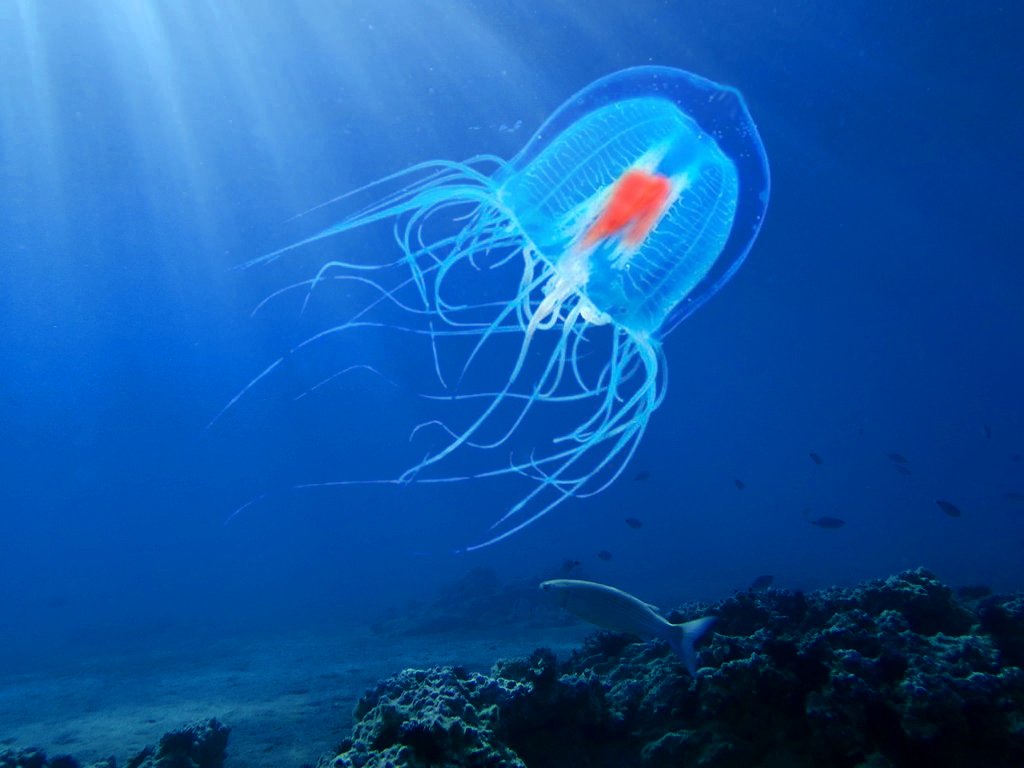
Are Jellyfish Immortal?
The good news is that you can be immortal. The bad news is that you have to become a floating blob of jelly to do so. Scientists have discovered a jellyfish which can live forever.
The Immortal Jellyfish known scientifically as Turritopsis dohrnii is now officially known as the only immortal creature. The secret to eternal life, as it turns out, is not just living a really, really long time. It’s all about maturity, or rather, the lack of it. The immortal jellyfish (as it is better known popularly) propagate and then, faced with the normal career path of dying, they opt instead to revert to a sexually immature stage.
Immortal Jellyfish Lifespan
It turns out that once the adult form of the 4.5 mm-wide species Turritopsis dohrnii have reproduced, they don’t die but transform themselves back into their juvenile polyp state. Does immortal jellyfish turning into a baby again? Simply explained, yes. Here is what actually happens.
Their tentacles retract, their bodies shrink, and they sink to the ocean floor and start the cycle all over again. Among laboratory samples, all the adult Turritopsis observed regularly undergo this change.
And not just once: they can do it over and over again.
Thus, the only known way they can die is if they get consumed by another fish or if a disease strikes the jelly.
However, there are still many mysteries surrounding the turritopsis dohrnii.
While the process of reverting from its adult-phase to a polyp was observed several times, it hasn’t been observed yet in nature, only in laboratory environments, most notably in the lab of Shin Kubota from Kyoto University.

Turritopsis nutricula vs Turritopsis rubra vs Turritopsis dohrnii
There was a lot of confusion even inside the scientific community between the three types of turritopsis jellyfish: the dohrnii, the nutricula and the rubra.
Simply put, the turritopsis genus can be found in many parts of the world and it it is not an easy task to differentiate between these tiny jellyfishes.
The nutricula was for a long time mistakenly the one referred to as the immortal jellyfish, while the jellyfish used in the lab observations was the turritopsis dohrnii, as they were collected from the Mediterranean, where the dohrnii is found.
The nutricula is found in the Caribbean and North America and the cycle reversal was not in fact observed on the nutricula. That doesn’t mean that the nutricula isn’t biologically immortal but that it has not yet been observed and proven that. When the study (Bavestrello et al. 1992;
Piraino et al. 1996, 2004) was published, the difference between the dohrnii and nutricula wasn’t clear yet and afterwards the media distributed the information that the nutricula would be the immortal one.
And finally the rubra is a turritopsis that can be found next to New Zealand waters.
Its photos can be found all over the web describing the nutricula, but the rubra wasn’t even observed to be immortal. Its shape is similar to that of the nutricula, but it is bigger (it can reach 7 mm versus the 4.5 mm of the nutricula).
So chances are that if you ever hear about the nutricula being immortal, it is in fact the dohrnii but a picture of a rubra will be attached.